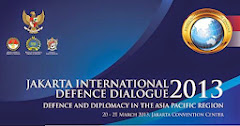15 Juni 2009
 A Globally Flexible Force
A Globally Flexible Force
The Minister for Defence, the Hon Joel Fitzgibbon MP, today announced a vision for a new force structure for the Australian Defence Force, as part of the Defence White Paper.
“As a result of the decisions taken by the Government in this White Paper, the ADF of the future will be a more potent force, particularly in the key areas of undersea and anti-submarine warfare, surface naval warfare, air superiority, strategic strike, Special Forces, intelligence, surveillance & reconnaissance and cyber defence,” Mr Fitzgibbon said.
The future strategic environment will require Australia to have a Defence Force that meets the primary obligations to deter and defeat attacks on Australia, and has sufficient capacity to:
 A Globally Flexible Force
A Globally Flexible ForceThe Minister for Defence, the Hon Joel Fitzgibbon MP, today announced a vision for a new force structure for the Australian Defence Force, as part of the Defence White Paper.
“As a result of the decisions taken by the Government in this White Paper, the ADF of the future will be a more potent force, particularly in the key areas of undersea and anti-submarine warfare, surface naval warfare, air superiority, strategic strike, Special Forces, intelligence, surveillance & reconnaissance and cyber defence,” Mr Fitzgibbon said.
The future strategic environment will require Australia to have a Defence Force that meets the primary obligations to deter and defeat attacks on Australia, and has sufficient capacity to:
-- provide appropriate support to civil authorities in relation to domestic security and emergency response efforts;
-- contribute to the stability and security of the South Pacific and East Timor, including by leading coalition forces;
-- contribute to military contingencies in the wider Asia Pacific region and to operate outside our immediate region in support of global security; and
-- undertake humanitarian assistance and disaster relief tasks in our immediate neighbourhood and beyond, as well as other essential tasks.
The White Paper also includes directions for the long-term replacement of those major defence capabilities that will be retired from service over the next 15-20 years, including: the air combat force of F-111s and F/A-18s, the Collins Class submarines and the ANZAC Class frigates.
The Minister stated that “By the mid 2020s, we will have a more potent maritime force. The Government will increase the size of the submarine force; replace the current ANZAC Class frigate with a larger and more capable Future Frigate optimised for anti-submarine warfare; consider the acquisition of a fourth Air Warfare Destroyer and enhance our capability for offshore maritime warfare, border protection and mine counter-measures.”
“The Government will also enhance other key elements of the Australian Defence Force, including our air combat capability; strike capability; Army's land force capabilities; and our Special Forces,” Mr Fitzgibbon said. The Government has made provision for remediating the current and projected force, by addressing crucial deficiencies and gaps which might limit the size and duration of deployments, or create unacceptable risks in some more demanding military scenarios.
Examples of this work include:
-- improved troop and cargo transport through new landing craft, large helicopters and transport aircraft,
-- additional explosive ordnance stockholdings,
-- additional Intelligence Surveillance and Reconnaissance and Electronic Warfare capabilities,
-- new night vision equipment and better personal body armour for our land forces,
-- improved vehicles for our Special Forces, and equipment to counter the threat of improvised explosive devices.
“Further the Government has better provided for areas of Defence support to domestic security, border protection, counter-terrorism and emergency response. The White Paper sets out a framework which will better support the Australian Defence Force in fulfilling other essential tasks including overseas humanitarian assistance, disaster relief and the evacuation of Australian nationals in times of peril,” Mr Fitzgibbon said. (ends)
(Defense Aerospace)










Tidak ada komentar:
Posting Komentar